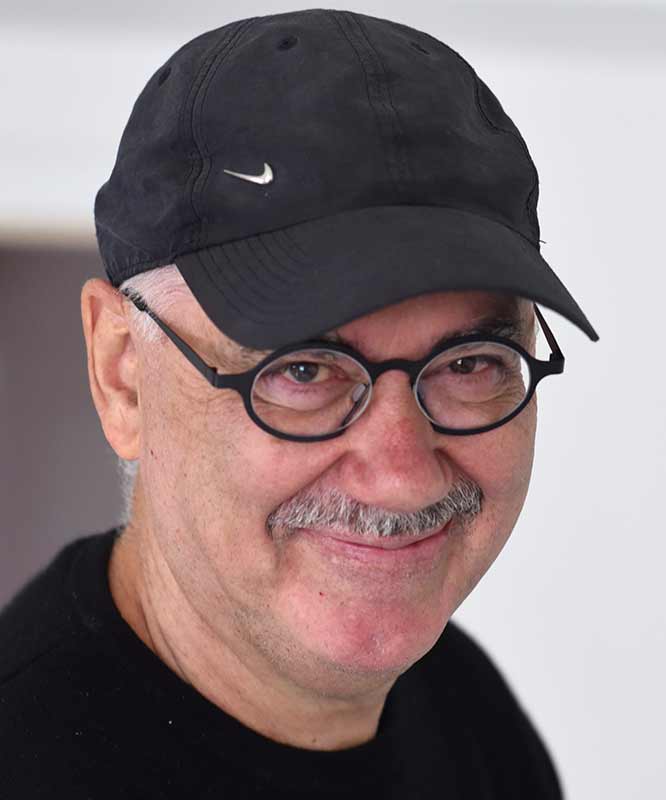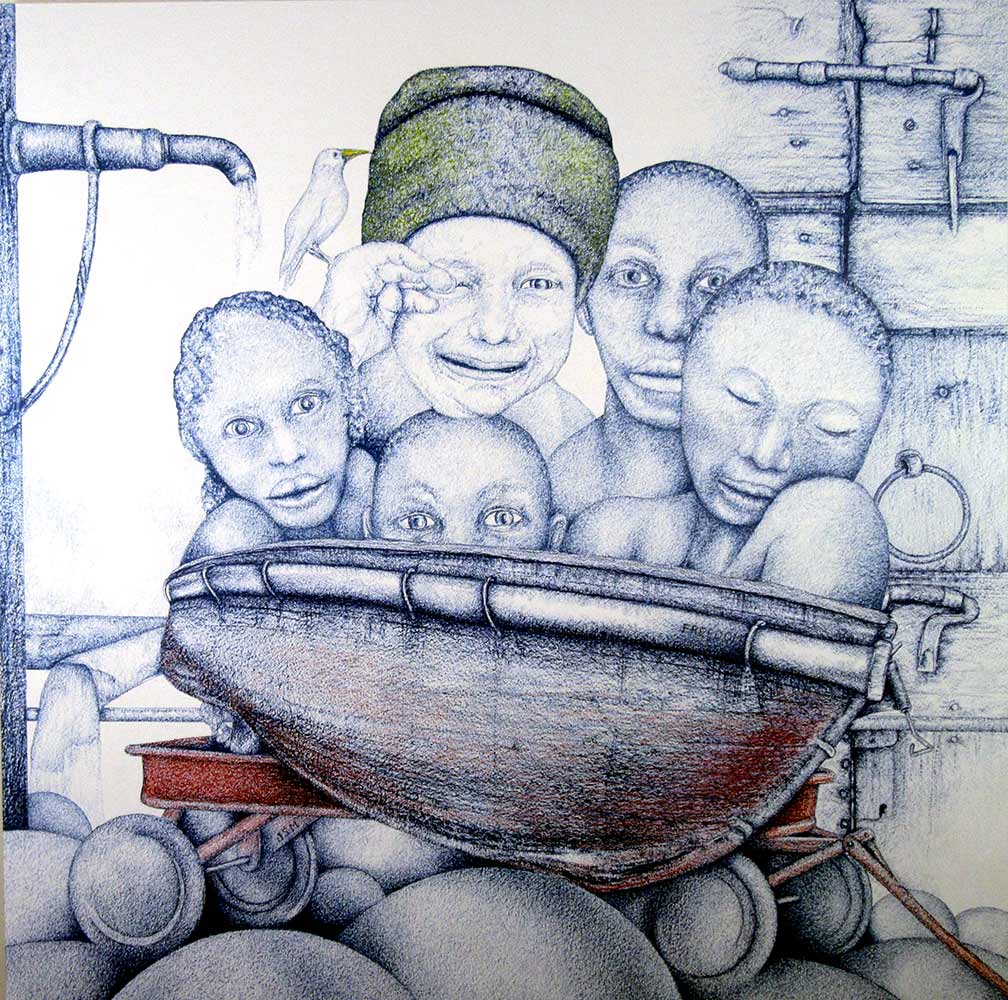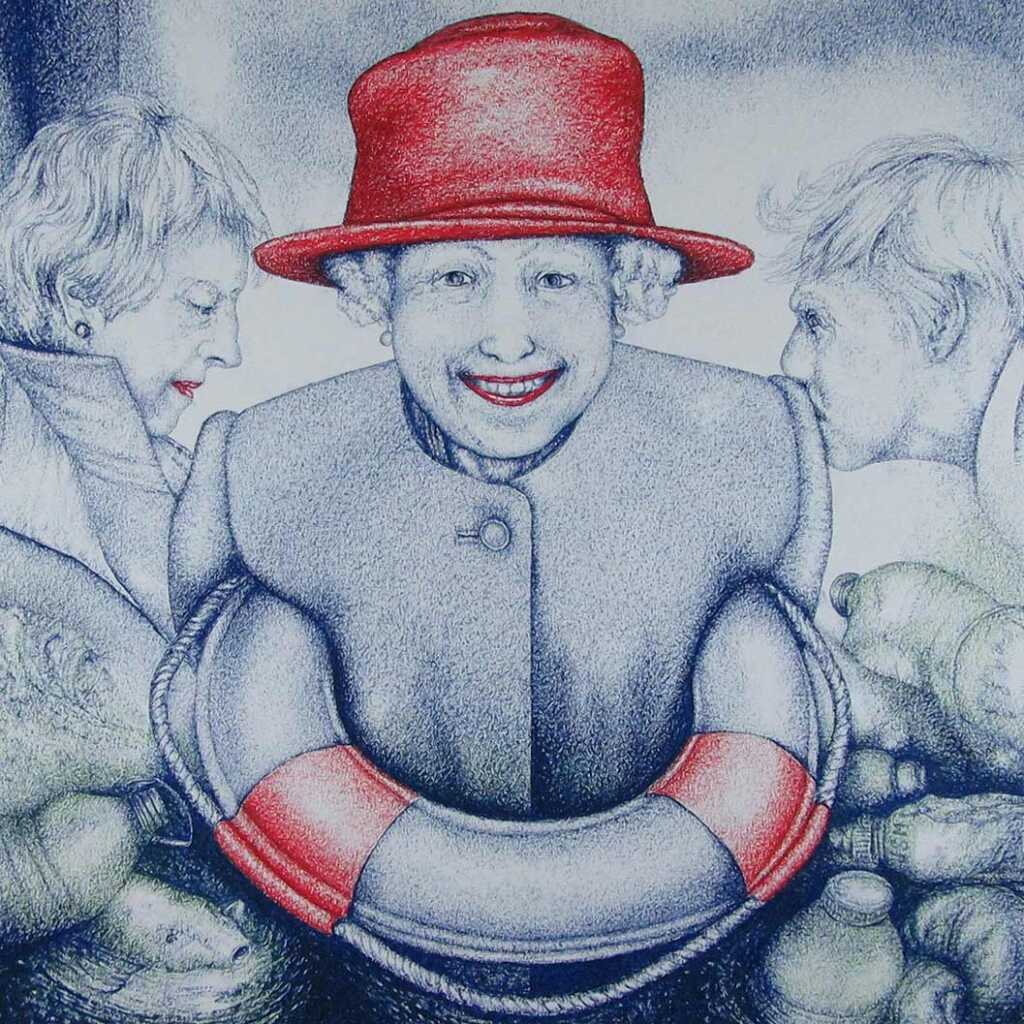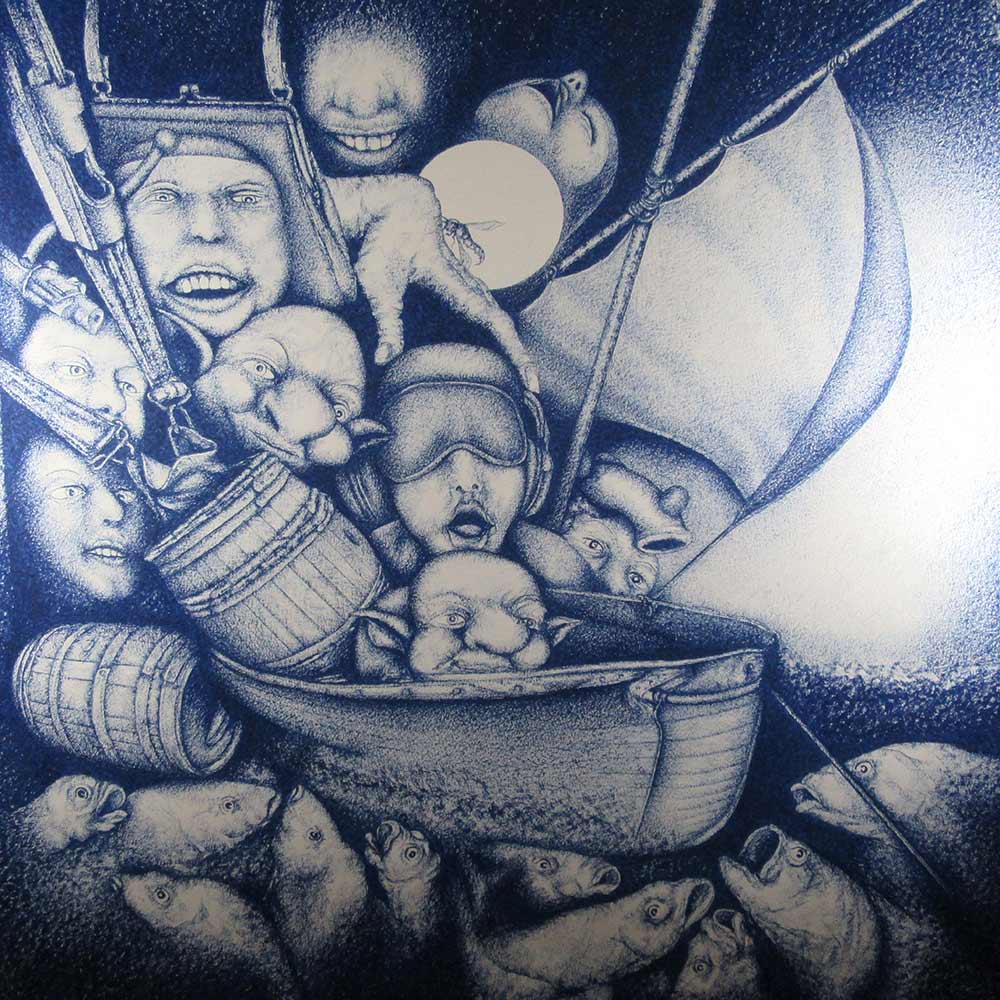Joey Schmidt-Muller | THE TIME OF MASKS: ON THE TOPICALITY OF ART

Joey Schmidt-Muller ©
All rights reserved.
JOEY SCHMIDT-MULLER

Joey Schmidt-Muller is a Swiss-Australian artist who has been living in Germany and Australia and currently resides in Basel, Switzerland. Schmidt-Muller’s artistic practice focuses on an unusual technique with oil pastel and a unique spray varnish technique. His subjects mainly are human behavior, fear, inner conflicts, and the change in living conditions in the world. With style between new realism and surrealism, he explores the liveliness of the mind in fine, graduated blue tones and realistic forms.
Joey Schmidt-Muller`s interest in the arts started in primary school, sparking his desire to create later in life. He graduated from the Basel School of Applied Arts. In his twenties, he was able to show his works for the first time at the ART BASEL. The early success threw him off track, and it took him many years to come back to where he started.
However, since 2012 he has been working like a madman to realize his paintings full of experiences and dreams.
Although Joey Schmidt-Muller explores other painting techniques such as charcoal and oil paint on canvas, oil pastel has become his favorite material. He enjoys the constant challenge of developing this demanding and complex medium.

Joey Schmidt-Muller © All rights reserved.
Medieval topoi, masks, grimaces, animal heads on human bodies – all of this sounds familiar to us from earlier art eras. In fact, the Swiss-born artist sees his roots in Francisco Goya: “My concept of Traumatic Objectivity has its roots in Goya. I feel a deep affinity to Goya, who I express in my own way,” writes the artist on his website.

Joey Schmidt-Muller © All rights reserved.
In the 14th century, the plague caused several million deaths – the allegory “black death” has been a symbol of this epidemic ever since. Otherwise, it is, again and again, allegories such as malice, greed, licentiousness, and cruelty that we discover in Schmidt-Muller’s works. Most of them are pictures that the artist creates with oil pastel, a complex technique that “combines” painting and drawing and which was first used experimentally by Picasso and which Joey Schmidt-Muller developed. As the name more than suggests programmatically, the Middle Ages was a phase of transition: structural change – the economy and society and the entire ideological superstructure were thrown over the (failure?) Heap – it followed, connected with names like Galileo, Copernicus, and Immanuel Kant, the time of the Enlightenment.

Joey Schmidt-Muller © All rights reserved.
The Copernican turning point pushed the earth as well as humans out of the center of the universe, and events, science, critical thinking, and secularization replaced religiously-based worldviews.
Are we in a similar situation today? A seemingly absurd question, but one that could withstand closer scrutiny: Fortunately, plague and cholera no longer play a role in this country today, but the new Corona pandemic coincides with a new turning point that we can increasingly recognize: the transition that is already imminent from the near to the distant society, is accelerated by the pandemic and, to a certain extent, enforced. But how significant, how existential is this change?
Is the previous society, in which technology and digitization were already formative, simply renewing itself to a new level – with a higher proportion of digital communication – so everything as always, only – please: with a little more distance?
Possible. But I fear that the change we are currently experiencing will have a much more profound impact: At Joey Schmidt-Muller, masks are a recurring theme.
Suppose we read his drawn medieval grimaces primarily as a reminiscence of Goya and his time. In that case, they are perhaps already related to the virtual world of avatars, in which we will soon exist side by side – devoid of meaning and not sensual will. History does not repeat itself; it is a common – undoubtedly controversial – thesis. If this thesis is correct, the new era, into which we are less steering than sliding into it, is therefore not a new Middle Ages. Instead, I call it – the phase of technological totalitarianism.

Oil Pastel, 110x110cm, 2021
Joey Schmidt-Muller © All rights reserved.

Joey Schmidt-Muller © All rights reserved.
The ideological superstructure is also no longer a religion – instead, it is (originally) man-made but increasingly detached and dynamically developing algorithms that decide for us. If Artificial Intelligence continues to make good progress, a self-learning, self-evolving religion will emerge here. We ourselves (as I’s) become superfluous, antiquated; maybe that’s why we can only recognize all of this with difficulty. But art has been telling us about this new reality for a long time: Beginning in 1948 with George Orwell’s clairvoyant novel 1984. Dystopias that predict a new two-class society in our western world, with a neglected and impoverished (digital?) Ragged proletariat.
As described above, Joey Schmidt-Muller relates his artistic work to Francisco Goya – both are linked by the apocalypse theme. In this respect, I am not expecting a new Middle Ages, much less a new Enlightenment. Instead, I fear that we will hide our real faces behind the full-body masks of avatars in the future. Of course, art remains and will probably make this visible and breakthrough at some point, but for the time being, we are probably living in a time of masks.

